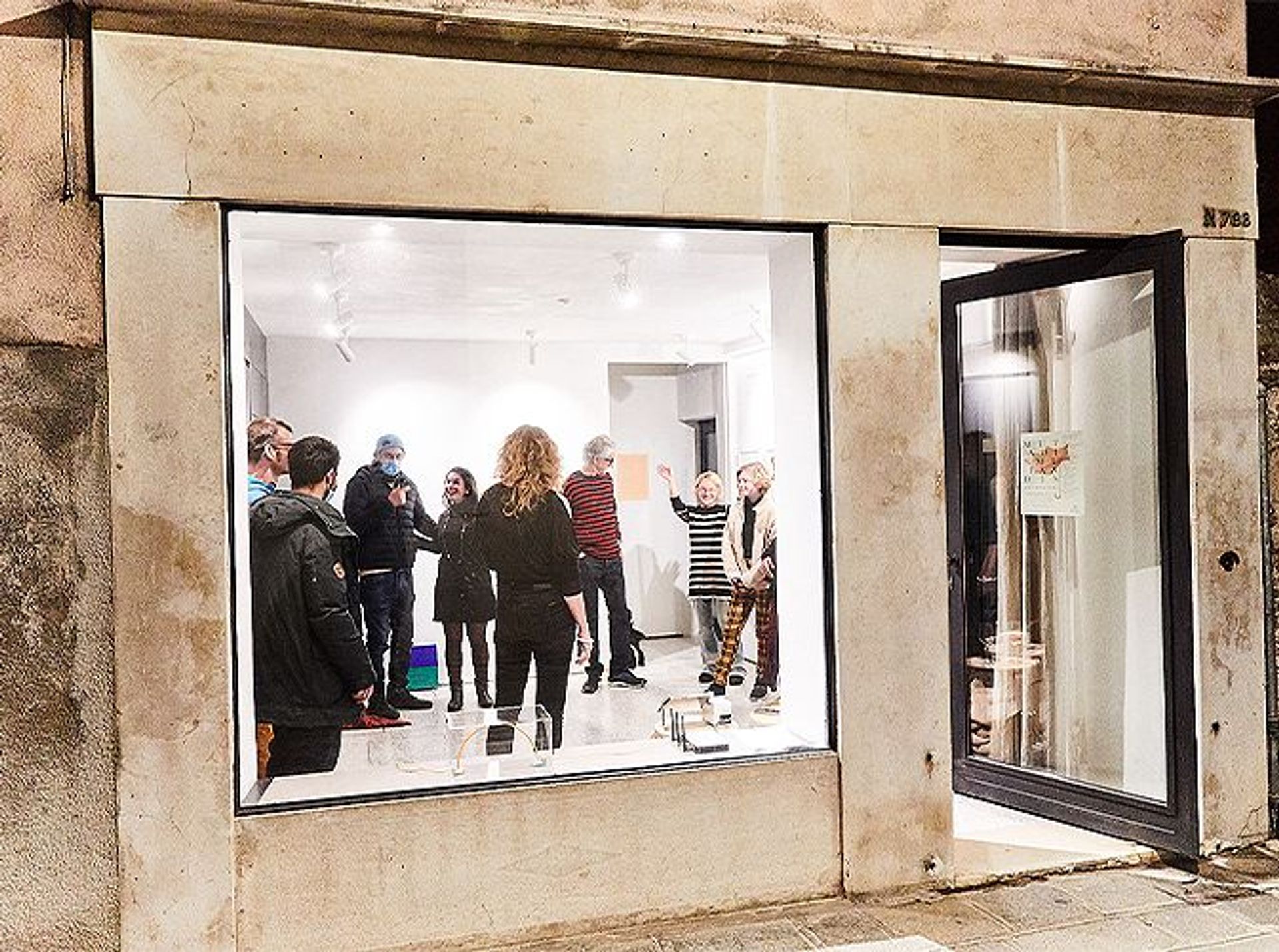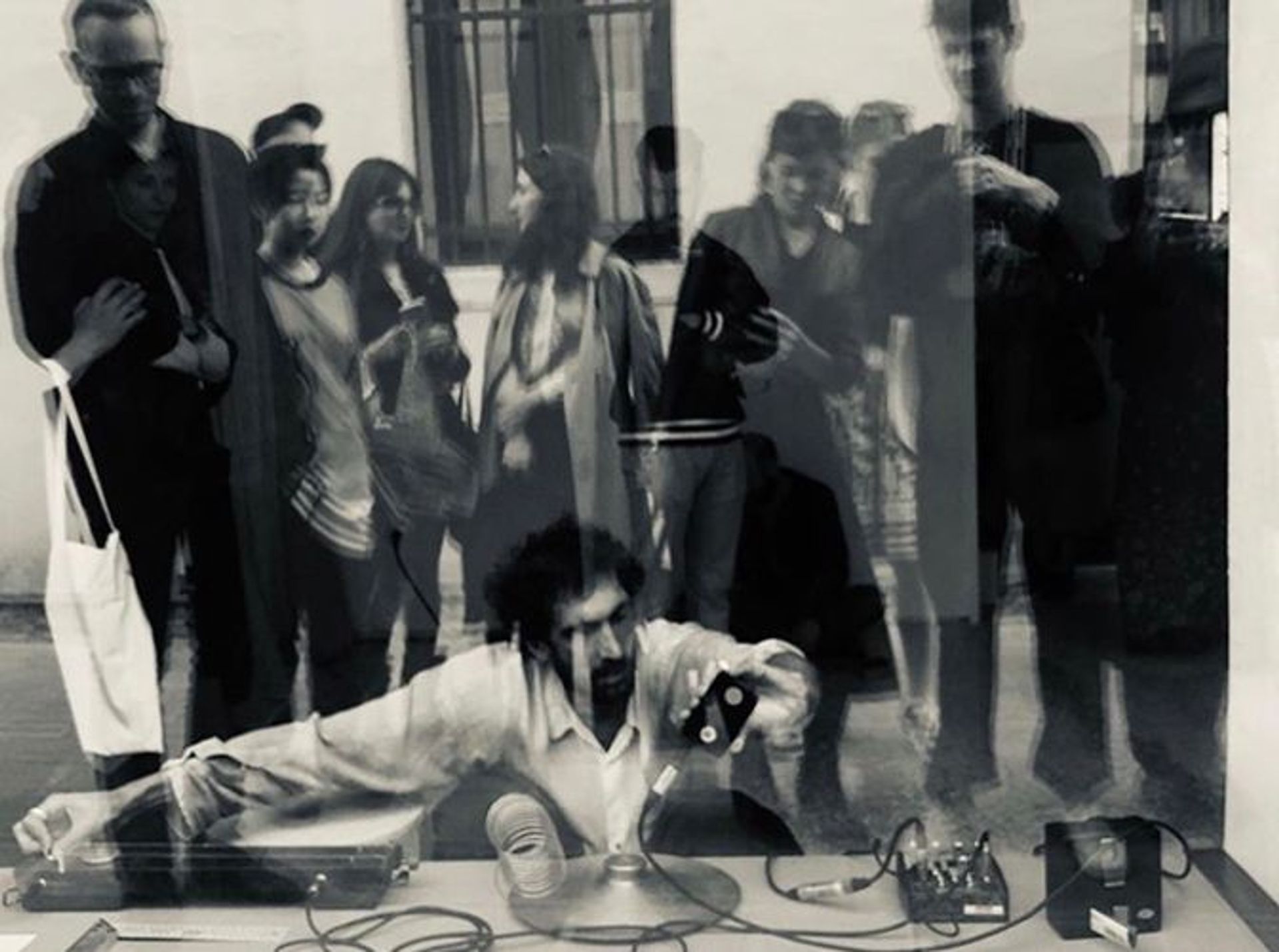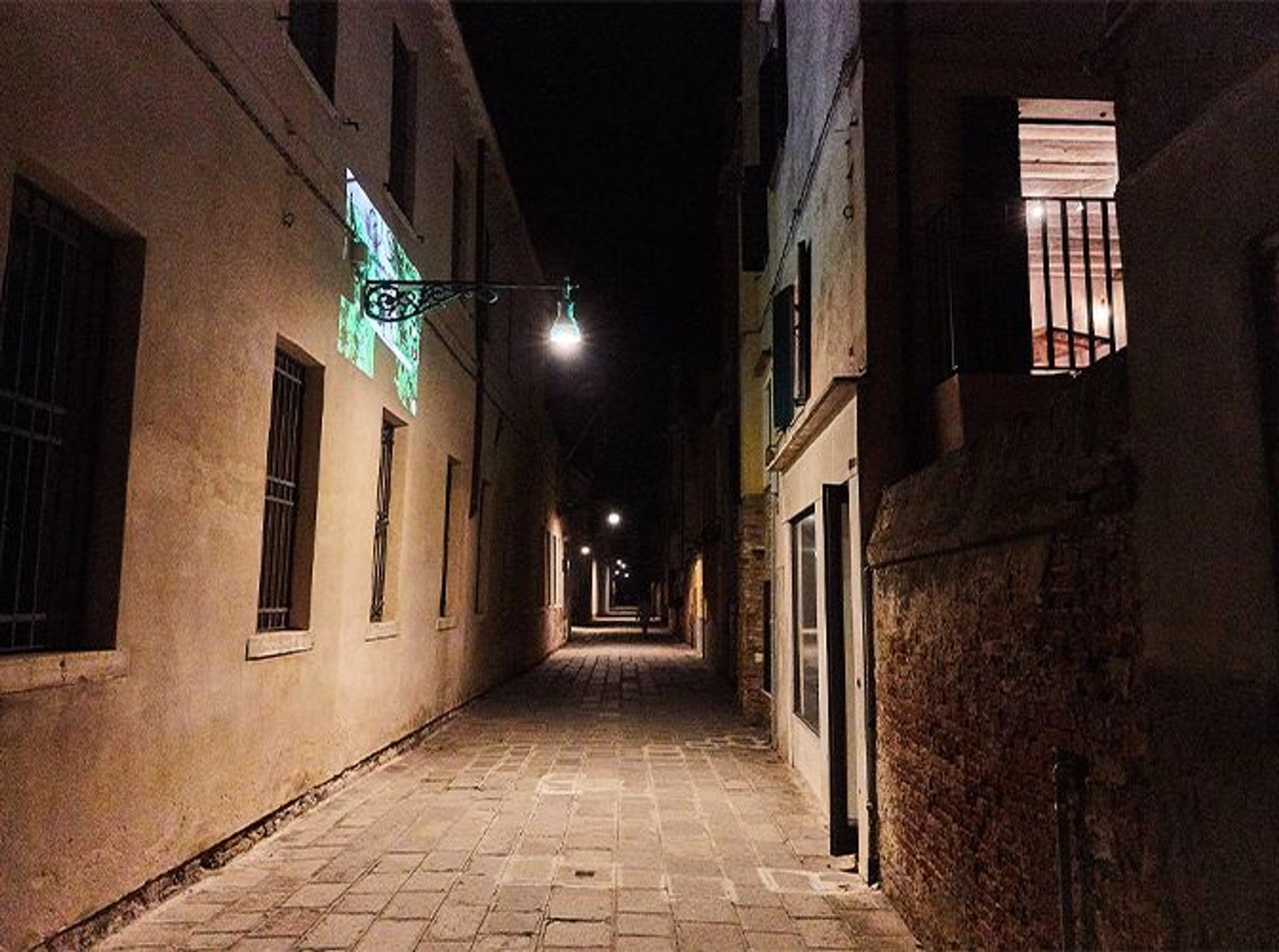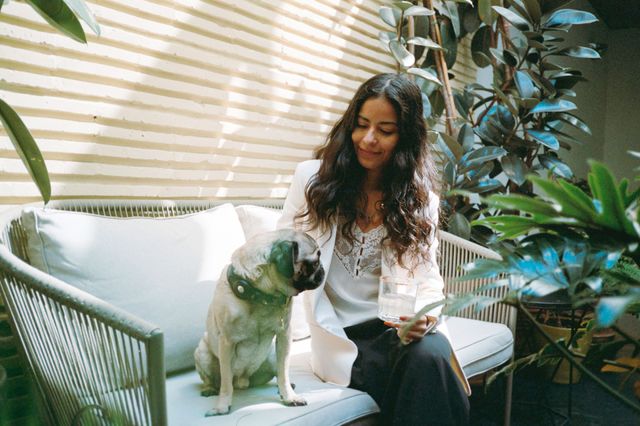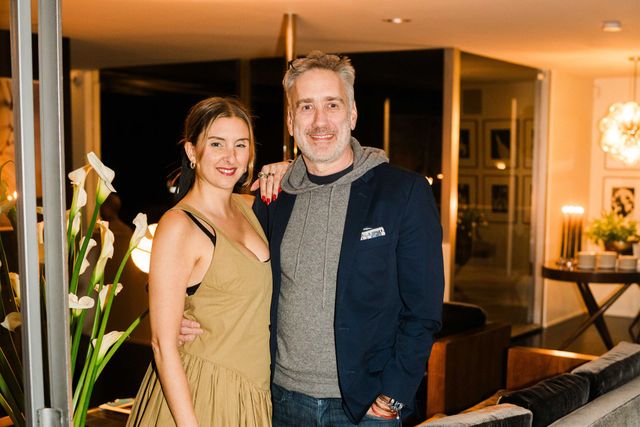A Conversation with Paulina Westerlind and Love Enqvist from Studio Giardini
- Category
- Q&A
- Written by
- Stacy Suaya
- Published
- May 23, 2021
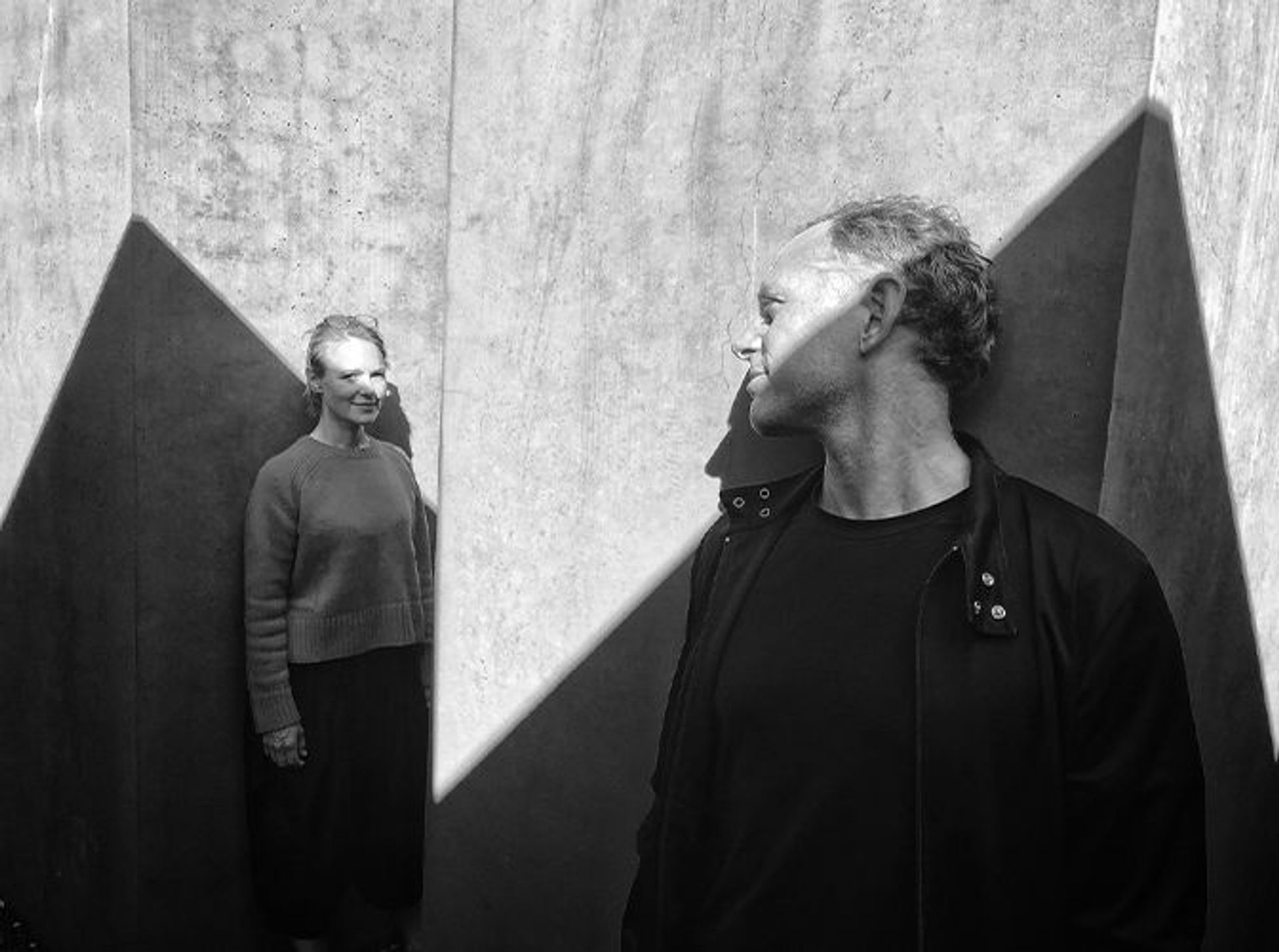
Love Enqvist is a Swedish contemporary artist working with film, photography and installation, and his wife, Paulina Westerlind, is a photographer. They’re based in Berlin, but one magical November night, they were wandering around Venice, Italy, and found Studio Giardini in an abandoned state. Formerly a butcher shop, they saw potential to turn it into a vacation home that sometimes hosts art exhibitions. We reached out to hear their story.

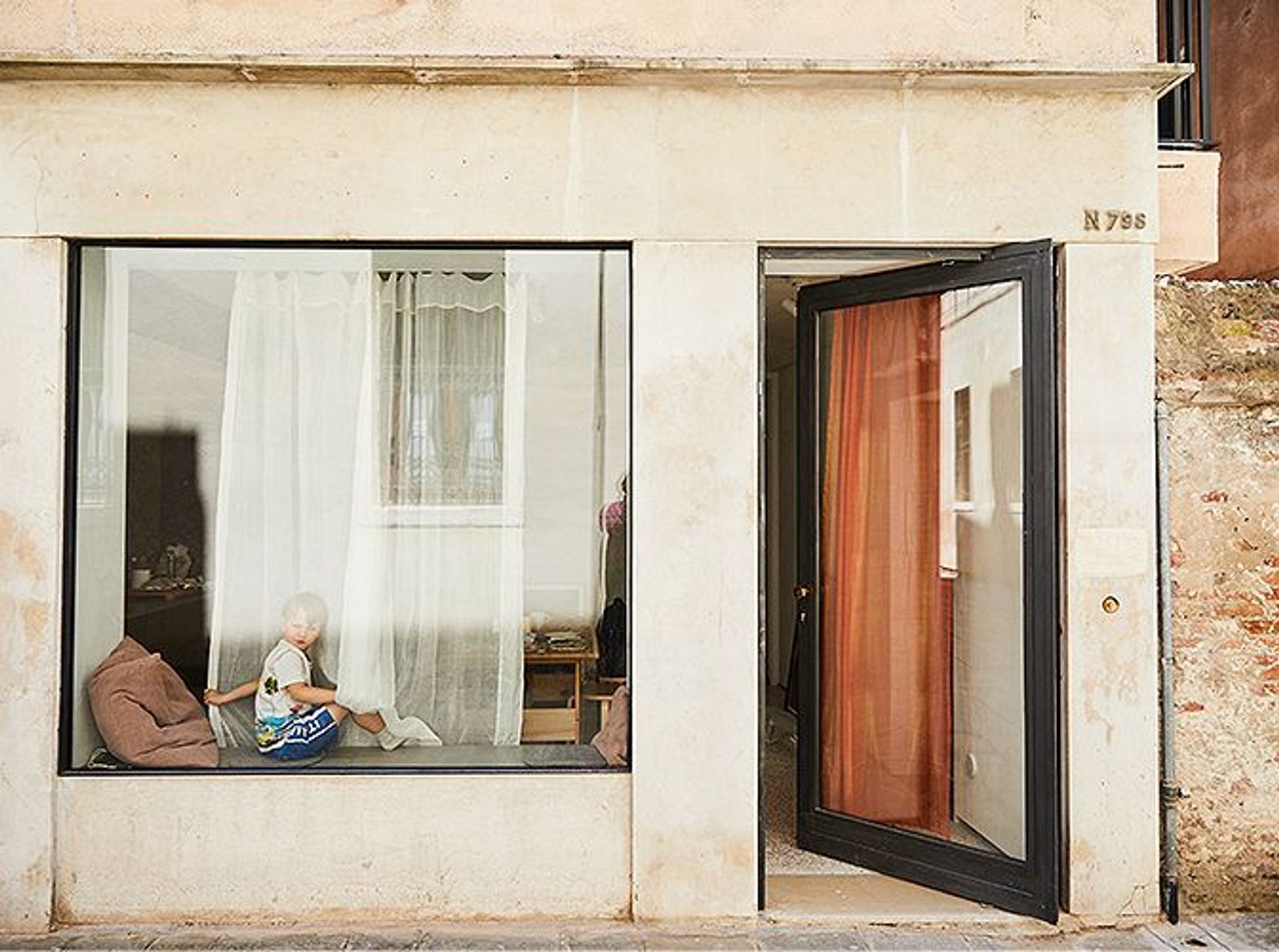
HOW DID YOU TWO MEET?
Paulina Westerlind: "On a kayak in Stockholm! I was drinking champagne on a jetty, on one of a few nights a year when it's warm all through the night and everyone is happy. Love came by in a kayak and asked for some water. I offered him Champagne and fresh shrimps. He accepted."
Love Enqvist: "Afterward, we went swimming. Then we both had photo shoots the day after, and I lost her number, but luckily she called me a few days later. We went kayaking again on our first real date, and I think we were together more or less since then."
HOW DID YOU END UP IN VENICE?
PW: "Whilst out sailing, we made a list on what we would like to achieve within the next ten years. A common project was to move to a new city and learn a new language. Since we love water and art, Venice became our choice."
LE: "I'd been to the Biennale many years and I always loved the Giardini. I also have an old friend from Berlin who worked in Venice a lot and had some contacts, like a Venice-born architect. And when he mentioned it was possible to buy something in Venice, I could see in Paulina’s eyes, ‘Oh really?’ and we decided to go."
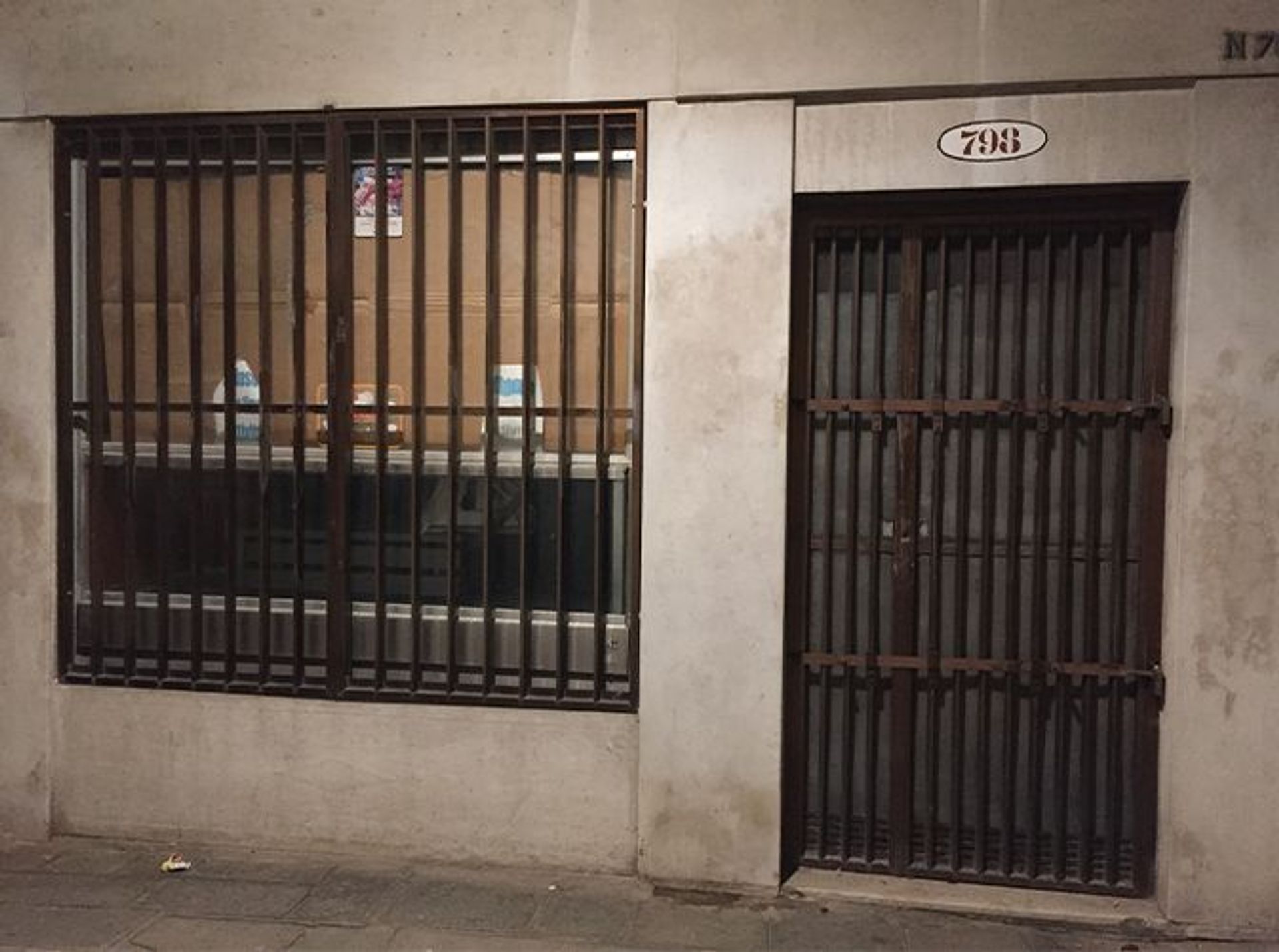
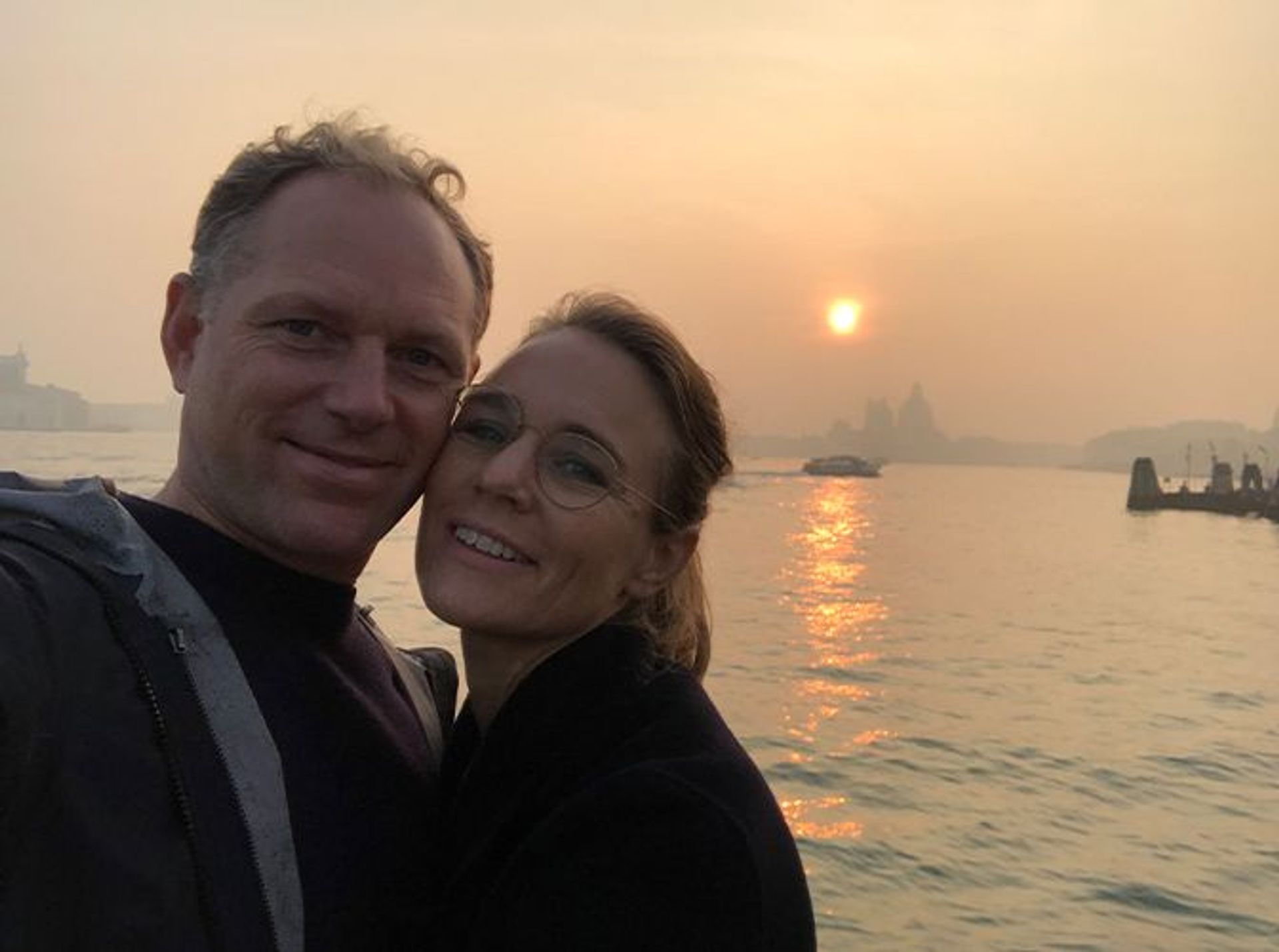
IS THAT WHEN YOU FOUND STUDIO GIARDINI?
LE: "Yes. We arrived on this magic night in November illuminated with lamps and we went into this yard that was like a vault and we saw a storefront with an old ad with a turkey on it in the window. It was a butcher shop, and his mother had lived two floors above. Ten years before, they just closed the door and put a coat on the hook and left it."
PW: "With its location next to the [Venice] Biennale and a storefront window, we immediately saw the potential in having a whole townhouse to transform, rather than just an apartment. It could also be a place for exhibitions and social events in an intimate setting. We decided to go for it, and bought the house on my 40th birthday which I felt was a symbol. Then there was the renovation, which became a much larger project than what we ever could have imagined. The bureaucracy and transport in Venice is very difficult and the house had to be fully renovated, from the roof to the sewage system under the house. It took a few extra years to finish."
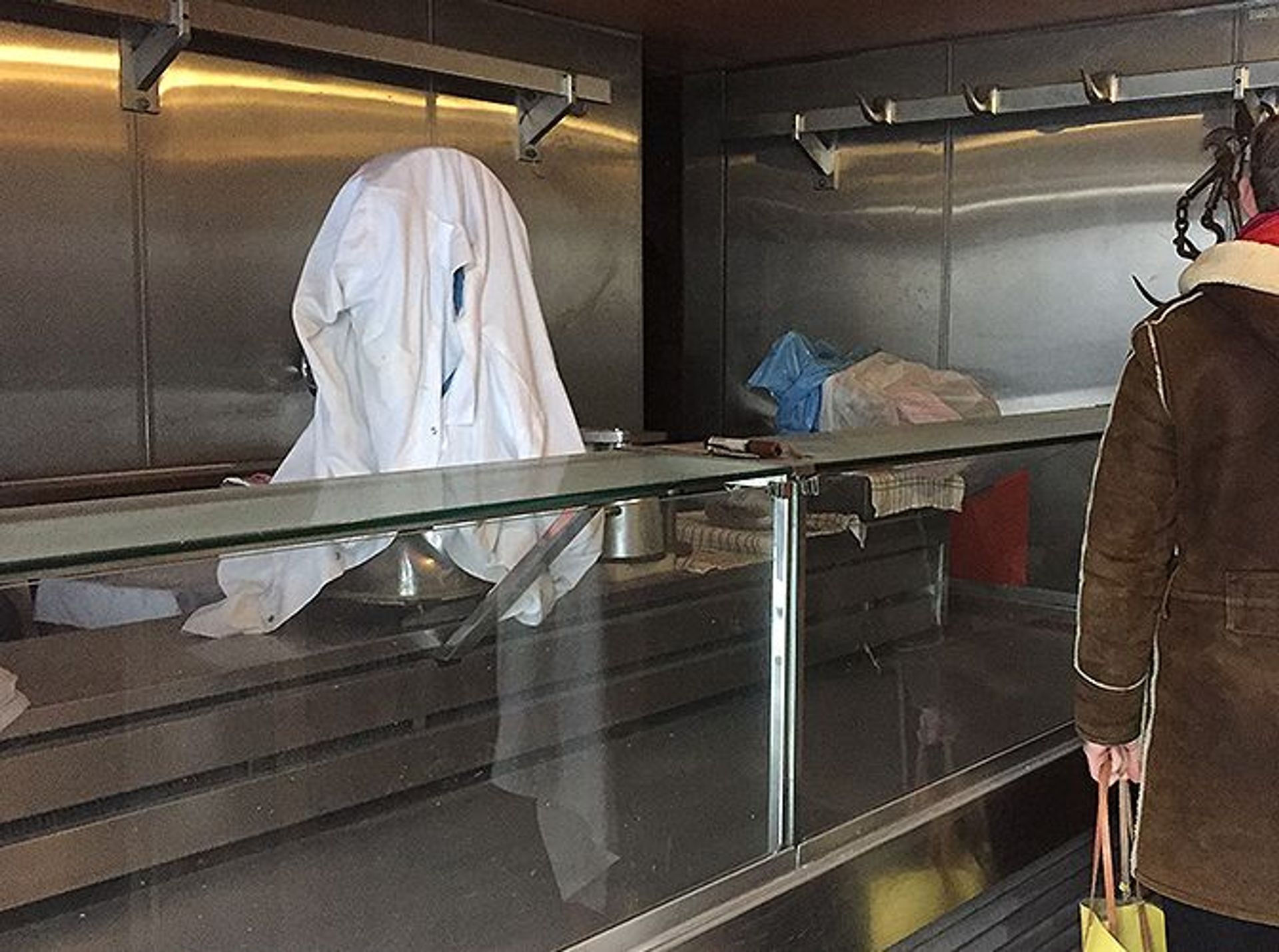

TELL US ABOUT THOSE CHALLENGES.
LE: "One example is we had to dig a hole two meters in the ground for the kitchen. It took one year just to get permission to start, and a professional archeologist has to be there when you dig, in case you find something of value as Venice is so old. And if you do find something, construction stops for another year!
"Another is I remember flying there from Berlin with a list of things I wanted to happen, but mostly I ended up eating and drinking Prosecco with the workers. They are not in a rush, they always say ‘Let’s fix it next time! How are the kids?'
"Then there were the doors, which were made to measure. They had taken a year and a half, and we had one month before the Biennale, when the house was already rented. I was going to cater for 100 people and a concert, and still, there were no doors. So, I told the guy that we would just come to Lido and get them ourselves. Suddenly, he came, delivered them, said “Ciao, ciao!” and ran away. Then we put them up and saw there was a big gap. Every detail is like that – it feels like a lifetime of process. Some people never finish houses in Venice. I was still painting the walls two hours before our first guests showed up.
"There were also the issues of the top floor. I couldn't figure out how to fit both a bedroom and bathroom inside it. And there was a window just at the corner of a wall and I wanted to keep the light, but also create privacy. I thought about it for over a year, while meeting with three different architects. Finally, I had a dream that I spoke to the Japanese architect, Tadao Ando, who told me how to solve it by putting the shower inside a triangle."

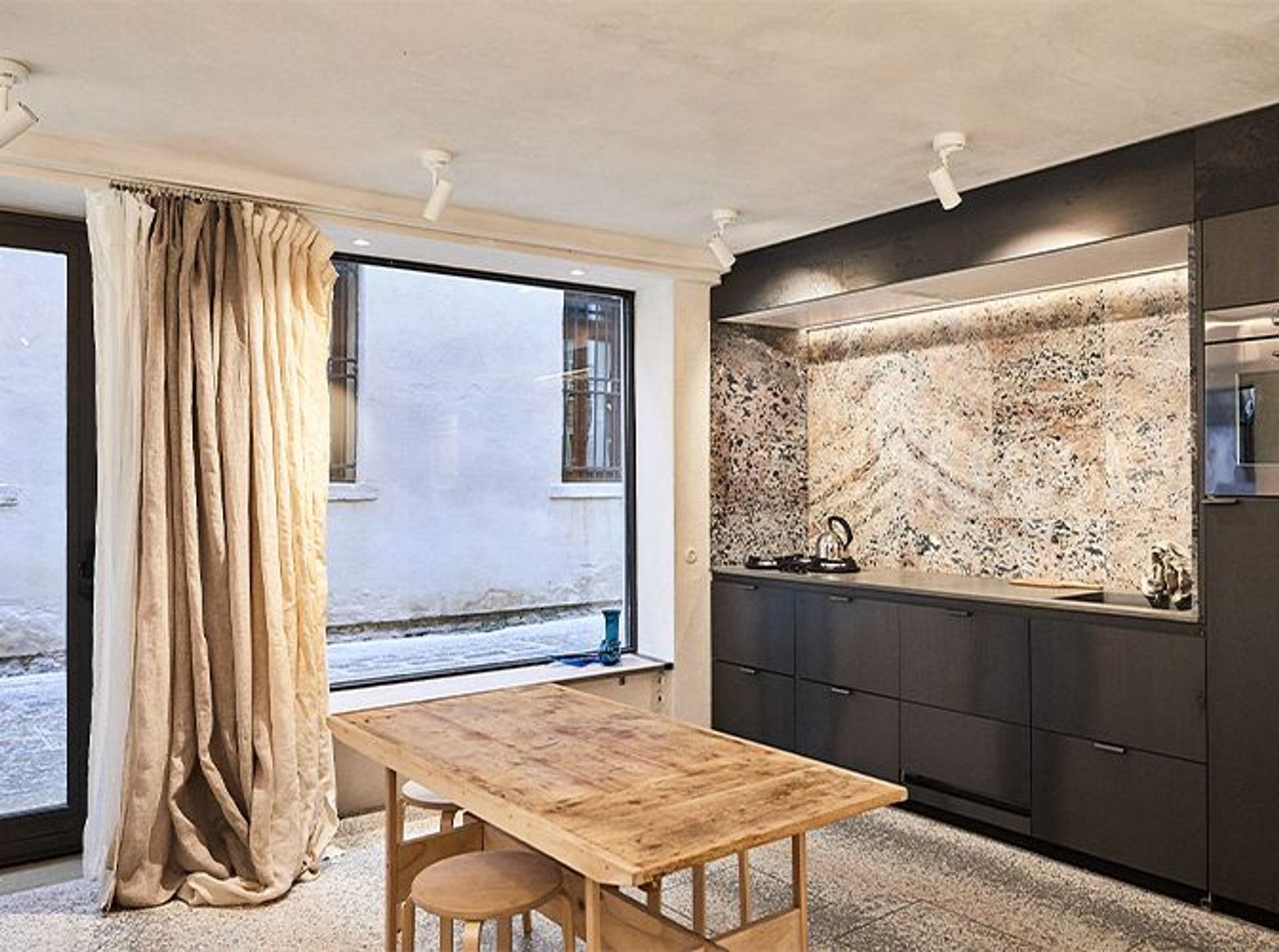

WHAT ARE YOUR FAVORITE PROJECTS OUTSIDE OF STUDIO GIARDINI?
PL: "I love to photograph people. But I’m always trying to learn new things: flying a drone, photographing architecture, some teaching. But usually there are always people in my pictures. I'm a bit afraid of getting stuck. A friend of mine says, ‘Once you crack the code, you need to find a new one,’ and I agree. I recently started working with Project Nima, which is an organization working with education between Ghana and Sweden. I’ve been their creative manager."
LE: "I grew up with parents that are seekers and on a research trip to India I went to Auroville and recognized a lot of themes both ideas and architecture that made me start to look for more places that fit into that category: Common ownership, decision making and a common vision. I got curious to see what made certain places survive until today since most of these projects and attempts fail at some point and disappear. That project became my book and an essay film, called Diggers and Dreamers."

Images from the Diggers and Dreamers exhibit
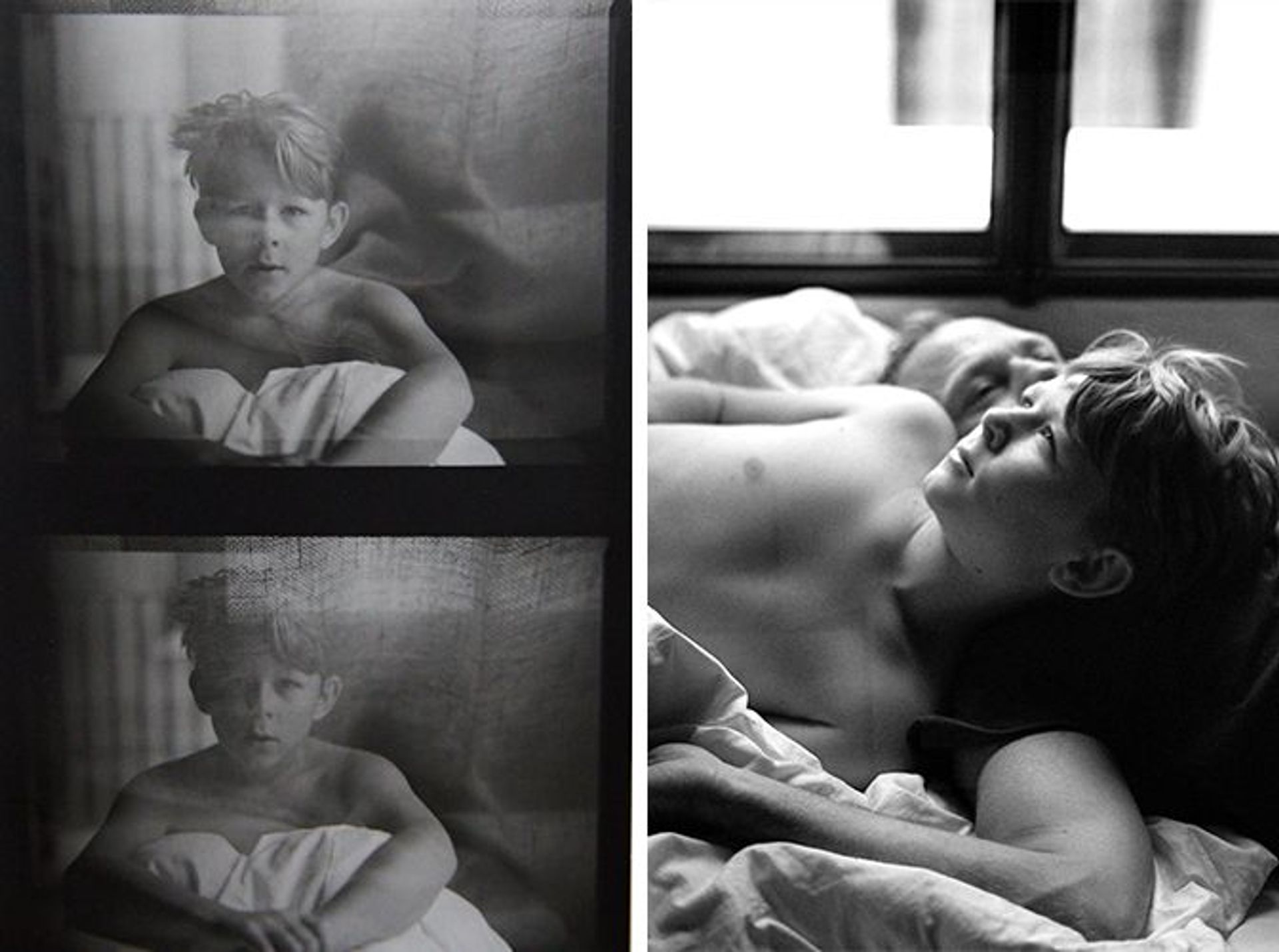
Images of Love and his son Eugen, taken in the house by Paulina Westerlind
DO YOU THINK UTOPIA IS POSSIBLE? IS STUDIO GIARDINI BASED ON UTOPIAN IDEAS?
LE: "I think we must be utopian thinkers again and believe in creating a better place, but utopia is a non-place. On the other hand, heterotopias are real places, worlds within worlds. And that is what Venice is for me. An Island with so many contradictions and worlds within worlds but still real, even if dreamy and floating. The city invites you to be social and to slow down (since there are no cars). Nothing moves faster than a walking person. It is also impossible not to get lost in the labyrinth streets. There is even national orienteering competitions in Venice!
"To have a home within this context is close to a utopia for me. Especially since it’s a good reason to invite friends, new friends and artists, and have unexpected encounters. Giardini shares this idea in the sense of openness."
TELL US ABOUT YOUR DESIGN AND ART CHOICES IN THE STUDIO.
PW: "Our aim was to create an open space by removing the staircase and walls. We worked with local artisans and natural materials throughout the house. Every window, every detail is handmade. Since we are Scandinavians we like simplicity and light. The kitchen marble is from an ancient abbey near St. Marc’s Square. The round ceramic tap handles are from Italian company, Neve Rubinetterie. We built some of the furniture and sewed some of the fabrics ourselves. Love took part in making the terrazzo floors with one of Venice oldest terrazzo families 'Vianello'.
"As for the art, sometimes there is an exhibition so it changes but we have a few works that stay in the house. Paintings by Otto Piene, Ylva Carlgren, Rune Hagberg and a Chinese viewing stone and old wooden Madonna with child."
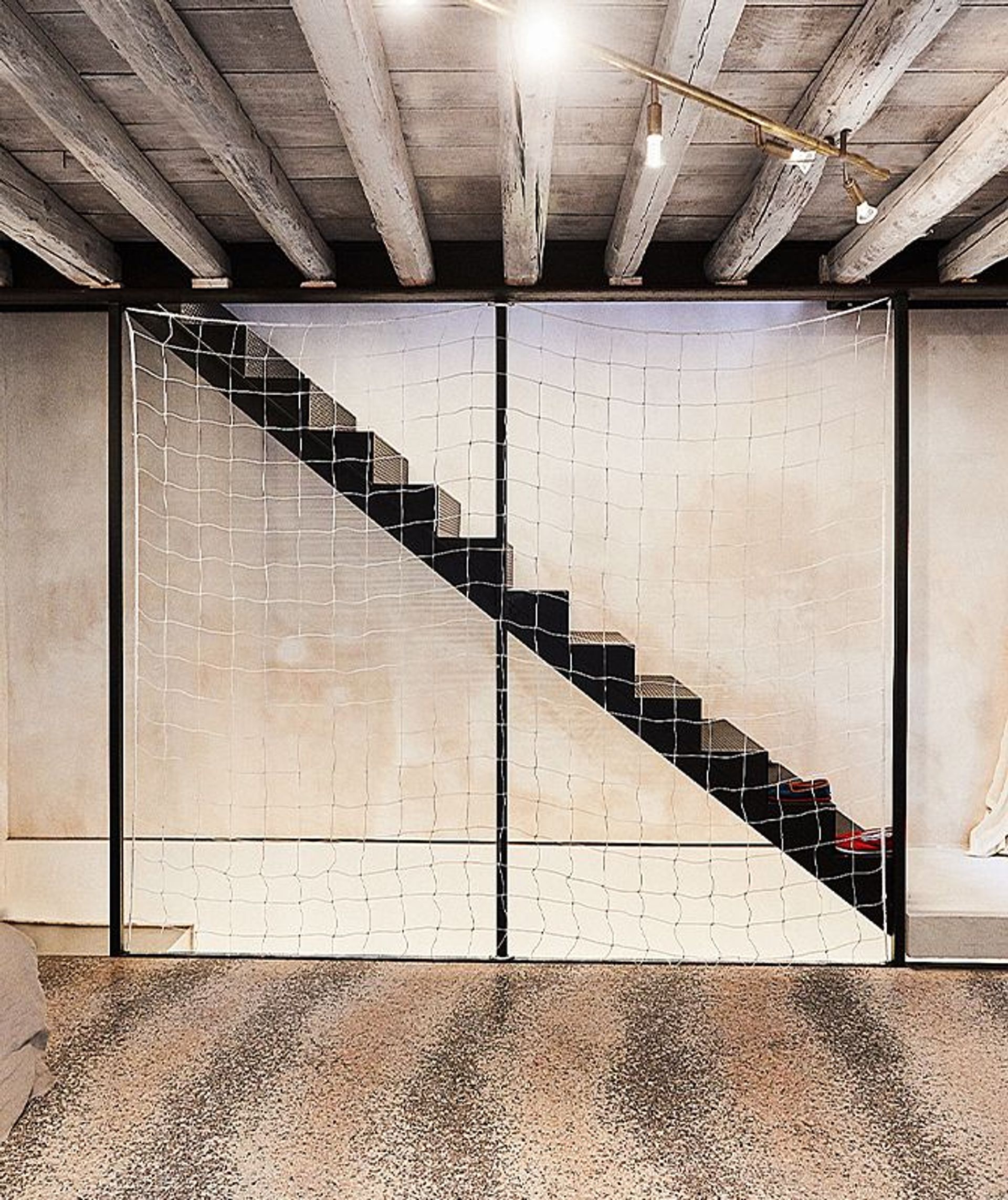
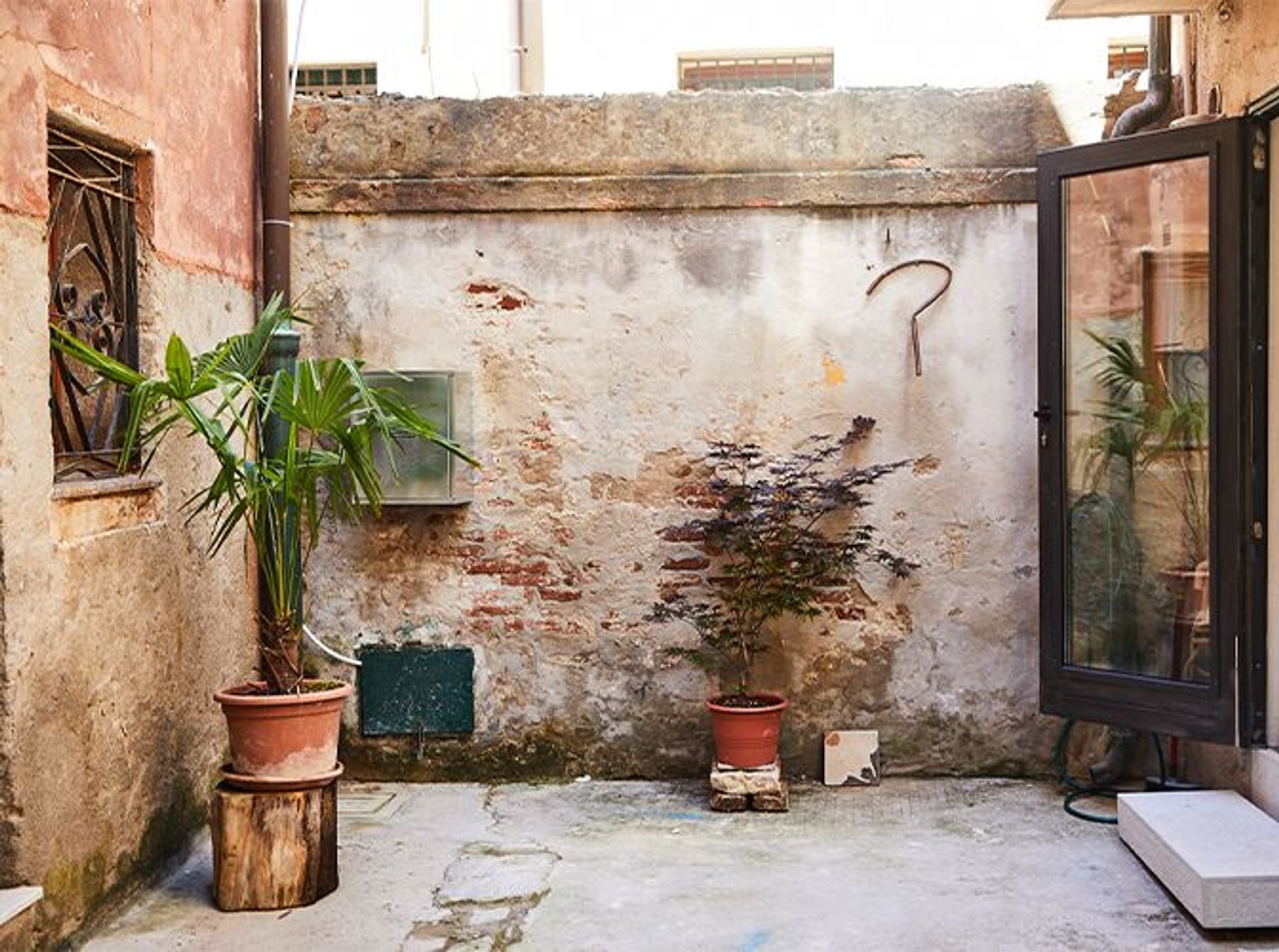
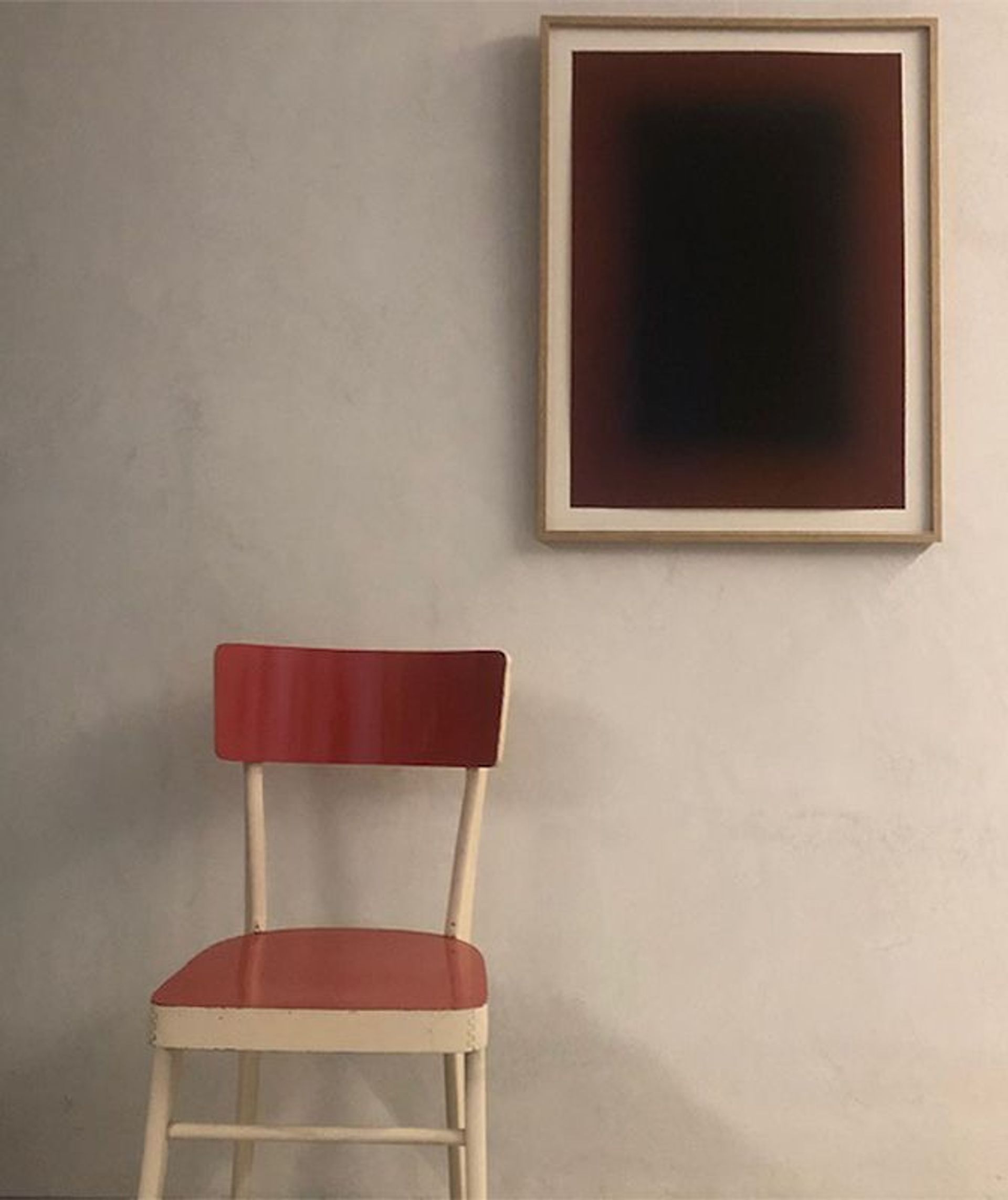
Painting by Ylva Carlgren
WHAT ARE YOUR GUESTS LIKE AND WHAT FEEDBACK DO YOU RECEIVE?
LE: "The majority of our guests are architects, creative people, guests to the biennale or film festival and friends of course. Or creatives who need a place to work for a week or two. We also rented it to the Swedish Art Council – it’s a great place for people to network for the Biennale.
PW: "One girl who came said, 'I wish Studio Giardini could stay as the secret jewelry it is now.' "
WHAT DO YOU HOPE HAPPENS AT STUDIO GIARDINI?
PW: "Dinners, gatherings, exhibitions, workspace, a retreat after a day at the biennale or film festival or one of the many museums or the Lido beach.
"Everything is turned on when you're in Venice, the smells, the visuals, everything is so beautiful. There’s good food. And the sounds and the light from the sunsets, the water. Also, when you stay in Studio Giardini which is so calm with its natural material, you feel that someone created it with a lot of love. You're like, 'Wow. Even that is perfect. And they must have thought about this. My wish for the house is that people come here and work and do fantastic things and create fantastic ideas, or maybe write a book or, or just rest from everyday life and just discover an altro mondo, which is Italian term for 'another world'."
To find another world and stay at Studio Giardini, click here.
